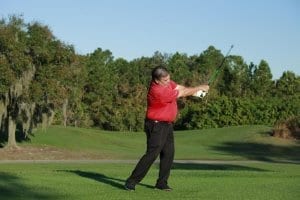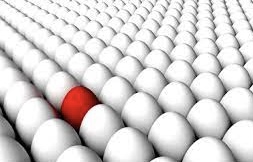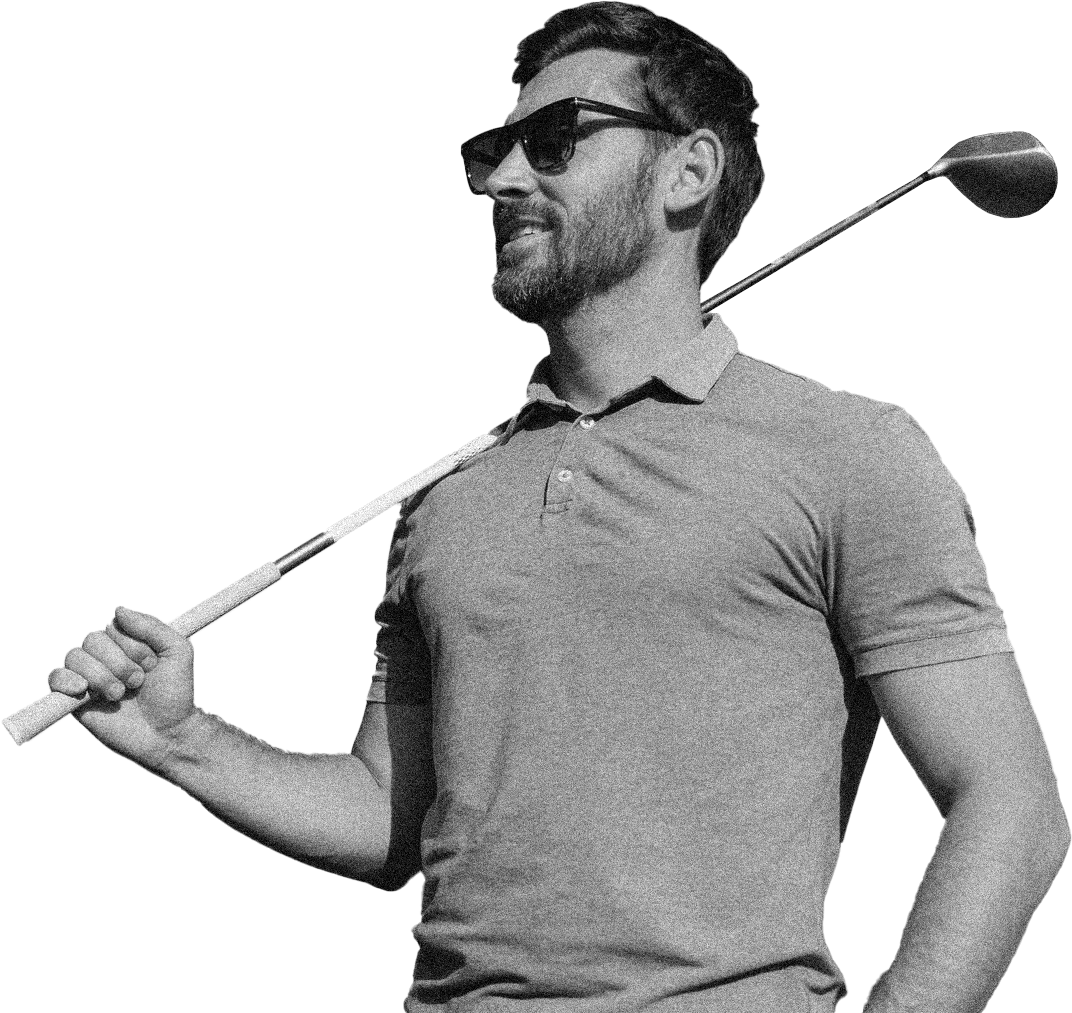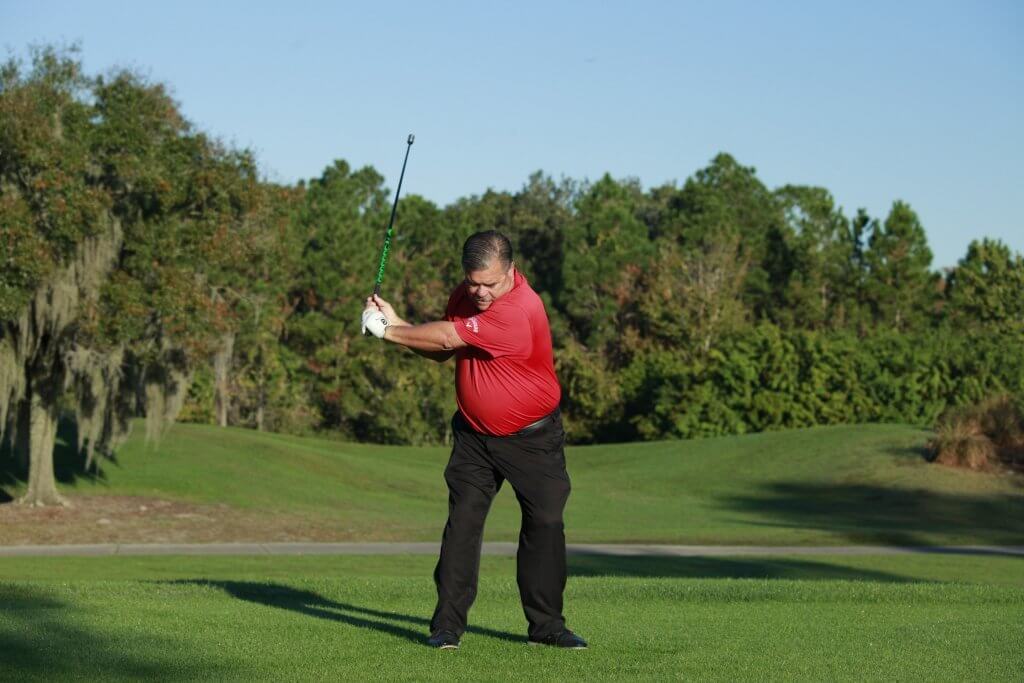Do you ever get frustrated performing a drill because you’re not getting the result you’re expecting? You can’t figure out why the drill works during a golf lesson but doesn’t when your coach isn’t around? And the more you do any drill the more frustrated you become?. Does this describe you and your practice sessions past or present? If so, are you performing your drills too fast?
Performing Your Drills Too Fast is the Norm for Most Golfers
Not all golfers are guilty of performing drills too fast. Most all the better golfers you know probably struggled with their practice habits at some point. Fast paced drills is probably the common thread of frustration for most golfers setting out on their improvement journey. You certainly shouldn’t feel alone if you’re guilty of doing drills fast.
There’s 2 Ways Your Performing Your Drills Too Fast
There’s not a day that goes by at my facility that I won’t see at least one golfer hitting golf balls with the intent of improving their skills. Without exception, they all have 2 things in common.
- They’ll finish hitting a large bucket of balls in under 10-minutes;
- And they’ll literally swing for the trees in the back of the range, solely equating improvement to an increase in distance.
If you ask any of these golfers what they’re trying to accomplish, they all answer in pretty much the same way, “I’m working on a drill.” Wow! Really?
This is not an uncommon theme at any practice facility any where in the world. Why? Current societal norms have us believe that improving our skills is equated to adding distance. And, our time is so divided between the many distractions and priorities in our lives, we have to practice fast to get to the next item on our list. Both reasons inevitably add up to the allure of instantaneous improvement.
On the surface, our intuition tends to have us assume that a drill, and the improvements it should make to your game, will provide immediate results. It’s dangerous to assume and this is a great example. Your brain and body need time to assimilate to the movement patterns the drill places you in. Despite feeling uncomfortable when performing a drill for the first time, most golfers neglect the pace of performing the drill. They continue to believe that the same pace of practice and swing speed they normally use will produce what they’re looking for. If this describes you, you’re fooling yourself. In addition, you’re far from realizing any improvement. But wait, there’s more.
Do you practice with discipline and a purpose?
If you’re relating to what you’ve read so far, then there is also a good chance you’re not performing your drills as disciplined as you think. Especially when your coach is not around.
Sloppy practice swings, not using the swing aids prescribed, not using swing aids properly, not isolating particular parts of a drill, as well as a host of other practice errors can all make for sloppy drill repetitions when practicing. And sloppy practice makes for sloppy swings on the course. It’s not enough to perform drills at the proper speed. You need good tempo and a disciplined practice regiment to insure any skill development can transfer from your practice sessions to the rounds of golf you play.
Do you practice enough?
Most golfers believe practicing is something you do before going out to play. False! That’s called warming up. If you’re “practicing” before you play, then you’re most likely practicing when you play, confusing your brain with too many swing thoughts.
Practicing can and should be 1 of 2 concepts for the golfer just beginning their improvement journey. Practice is either a dedicated time after playing, or when not playing,a time you solely focus upon making improvements. And improvement efforts must have a purpose. Practice can also happen on the course. To do so, don’t keep score. Score is not part of practice early in your improvement process.
Is Your Brain and Body Capable of Learning Movement Fast?
The simple answer is yes. But there is a more complex process than meets the eye.
I’m not a scientist, or a biophysicist. But I have learned a lot as a golfer, and as a golf coach. I’ve learned a lot from mentors and from continually educating myself. I learned a lot as I experienced multiple and extensive rehabilitation periods for knee injuries. I’ve also learned from watching my son grow, as well as step grandchildren grow. I’ve been tutored by quite a few intelligent individuals, who took the time to explain how movement patterns are ingrained. And how we are born with a hard wired ability to start improvement more slowly than you think during the initial stages of any development.
To keep it simple, speed builds into your movements organically as your equilibrium develops its ability to handle speed of movement while maintaining balance. The best example of this phenomenon is watching a toddler learn to walk. Walking too fast too soon, the toddler falls to the floor. Yes, like you and your golf game, the toddler gets right back up and tries again. But the difference between you and the toddler is the toddler will get up and walk slower than the pace they walked when they fell. Some scientists believe the toddler actually slows down by as much as 25% of the tempo they were walking when they fell.
Slowing down allows the equilibrium a chance to maintain balance while the body performs complex movements. This process is what’s called “dynamic balance”. And its dynamic balance your missing when trying to swing fast executing a new drill. Side way shots, fat or thin shots, or shots that do not end up as you intended is how you fall down. Start realizing now that when this happens to you, its time to slow your drill down. You’re hard wired from birth to do so. And that never changes. Learn new movements slower by performing drills slower. Just because you’re no longer a toddler doesn’t mean there’s a short cut to the process.
 How do You keep from Performing Your Drills Too Fast?
How do You keep from Performing Your Drills Too Fast?
This question is obviously easier said than done for most golfers. Making the process of slowing down your drills simple should make for better performed drills and sustained results.
Does the drill fit into an overall plan to improve?
If you head into any improvement process blindly, you’ll most likely experience nothing but grief and frustration during the process. Be sure you have a comprehensive plan going into any skill or motion improvement. If you need help with this, it may be worth reading one of my previous posts about how to set goals and create a prioritized improvement plan.
Understand what the drill is supposed to improve
If you’re performing your drills too fast, it’s probably because you don’t have a full understanding of what you’re attempting to improve. This is partially your fault and partially your coach’s fault.
Be sure to ask the questions you need to fully understand why you’re performing a drill. Don’t take if for granted a teacher or instructor will provide that information for you. Keeping your instructor’s best efforts at heart and in mind, there is a chance you’ll miss something in the translation from golf instruction language to a “feeling” or “awareness” of how a drill is different from your normal swing. Be sure you understand the main reason for performing the drill and what you should be feeling within the drill, whether it be a better position or motion of the body. Or a better club position.
Start simple and accurate
When first attempting a drill on your own, start by simply setting the drill up properly. Be sure swing aids or any other props you need are set up correctly and placed in a direction that provides you a clear and definitive target. If you perform drills without a target, how will you know if your making any improvement?
Rehearse, Rehearse, Rehearse…..in Slow Motion
There’s a purpose for all rehearsals, whether on stage or on the course. Rehearsal swings allow you an opportunity to feel differences between your normal swing and what the drill can provide your swing. Performing rehearsal swings in slow motion is even better. Slowing a rehearsal swing to a crawl can isolate positions of the drill, allowing your brain and muscles to feel significant differences between the slower motion and your normal swing.
Stop and Hold
Don’t be afraid to stop a drill in mid-motion to totally isolate a particular position. Doing so places a little stress to the body that the brain has to adjust to. The adjustment is what the brain needs to remember how you got to that position. And holding the position can increase the movement pattern’s ability to repeat to the same position.
Distance is of NO VALUE
Unless the drill you’re doing is specifically designed to increase club head speed at impact, performing a new drill at full speed provides no significant value, unless you want to see poor results.
Drills for the most part are designed to create a more efficient swing pattern. The efficiency returns the face and path of the club to impact as near as perfect as you’re capable. And like the toddler, the more you perform the drill with successful results, the more likely speed will organically increase as you continue to perform the drill.
As you increase speed, be aware there may be a speed where the results start to falter again. It’s at that point you have to ask yourself again, are you performing the drills too fast? Most likely so. As you recognize this, be willing to decrease the speed. I call this “gearing down.” It’s about gearing your effort and tempo down to a point that brings the speed of the drill back under control. This should provide the desired results you’re looking for. This variation of incremental learning will actually speed the process of learning, not delay it. And don’t be afraid to ask yourself some questions along the way. Ask yourself how the 2 speeds differ by feel. Also, where the speed increases or decreases as you perform the drill.
I agree. To create distance, you have to swing faster. And swinging faster is not what we’re after. Success with a drill is measured by how you are able to balance the swing movement. And the resulting ball flight. Like the toddler, the more often you balance a particular speed of movement, the more likely speed will naturally grow into your swing.
Small Swings are the Thing
It’s safe to assume that slower drill swings will produce smaller swings, in general. If you feel your drill swings are getting long, you’ll most likely decelerate the drill, a huge mistake.
The ideal drill swing when beginning a new drill is a swing you would make to hit a 20-40 yard pitch shot. A swing of this length you can normally control and balance well on the course. It’s not a surprise that most if not all touring professional when attempting to make a major swing change, use a pitch shot to begin the process. They also use the pitch shot as a return point should their improvement process start faltering.
Conclusion
If you are performing your drills too fast, your learning curve is a slow and frustrating climb. And that climb will eventually stop at a lower plateau then you’re expecting, not reaching your ultimate goal or potential.
Tiger Woods recently provided his opinion about how an amateur can improve. To paraphrase Tiger, most amateurs could see more improvement if they took their time and made smaller swings when trying improve and perform an improvement drill.
Why climb a hill fast, only to slide down it faster when your wheels fall off on the course? If you are performing your drills too fast, maybe it’s time you take a break and slow down. Better ball striking is a result of better swing movements and will equate to longer distances. So at worst, why not just attempt to slow your drill swings down and let the drill do magic? Be patient with your progress. With patience will come speed. After all, what do you have to lose if your not patient with this process? Losing more distance than you’ve already lost?







